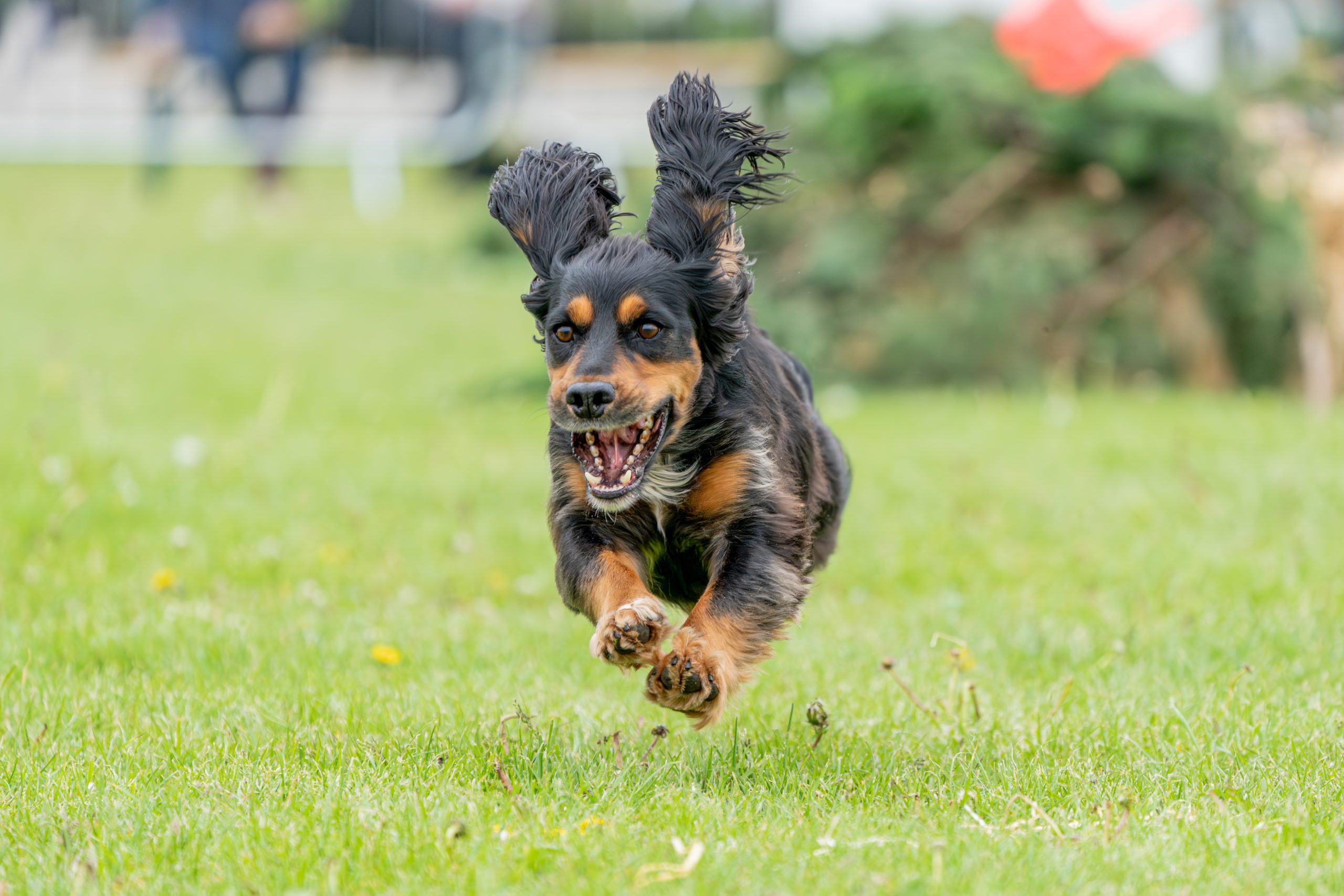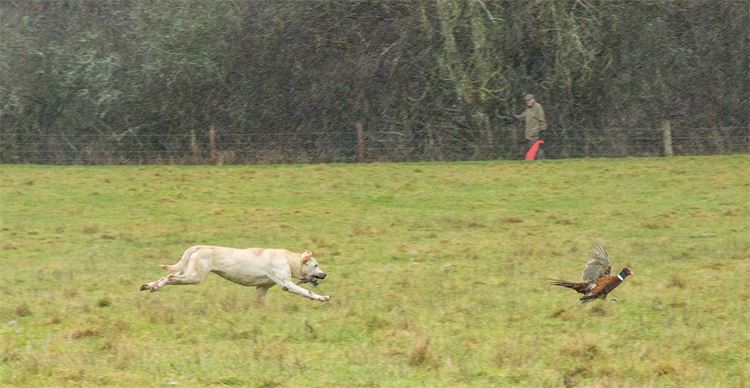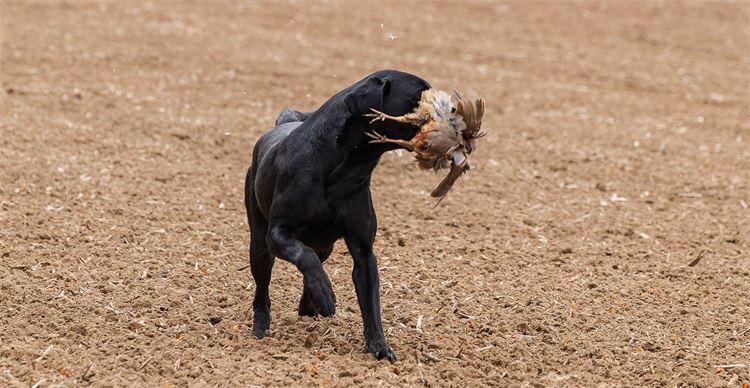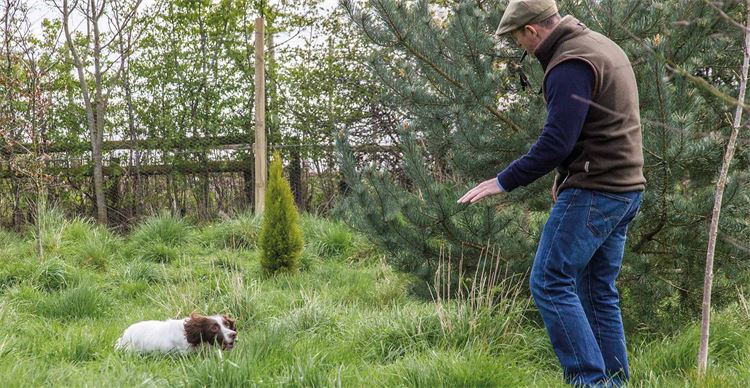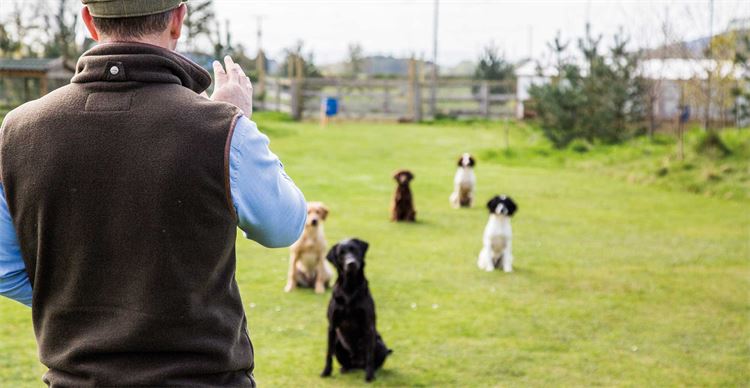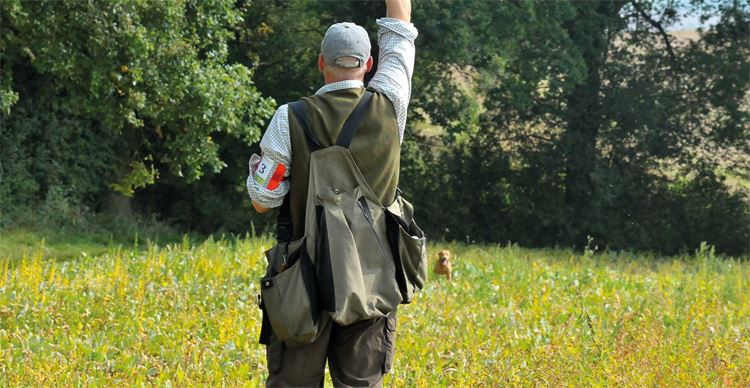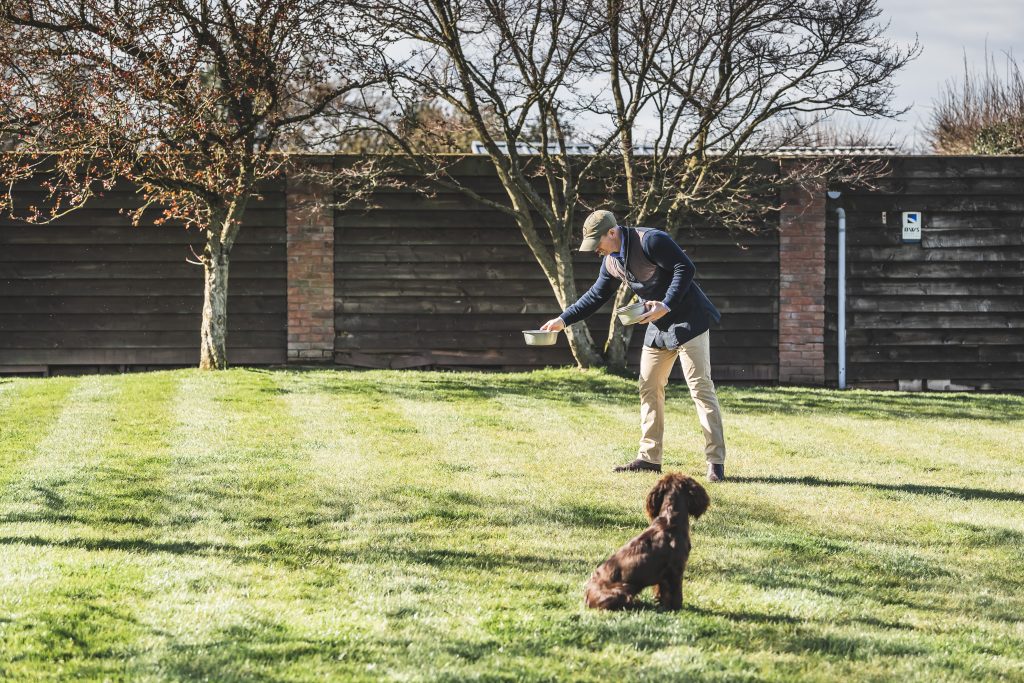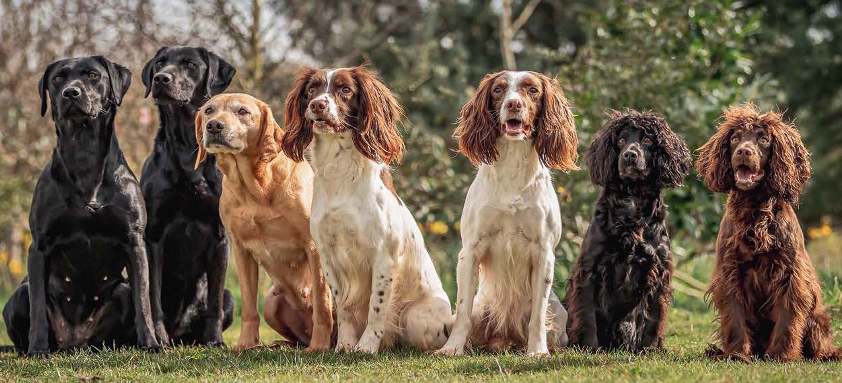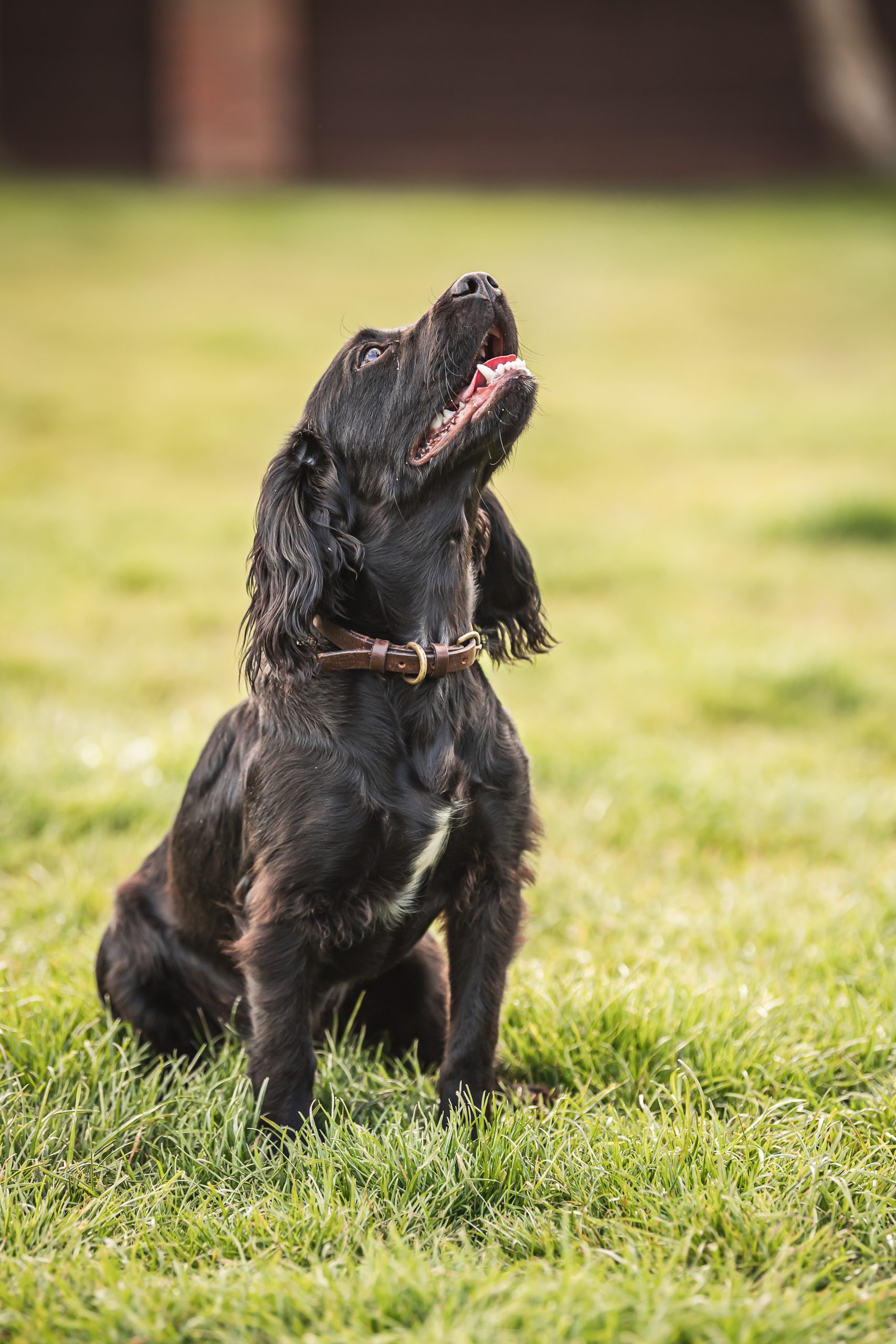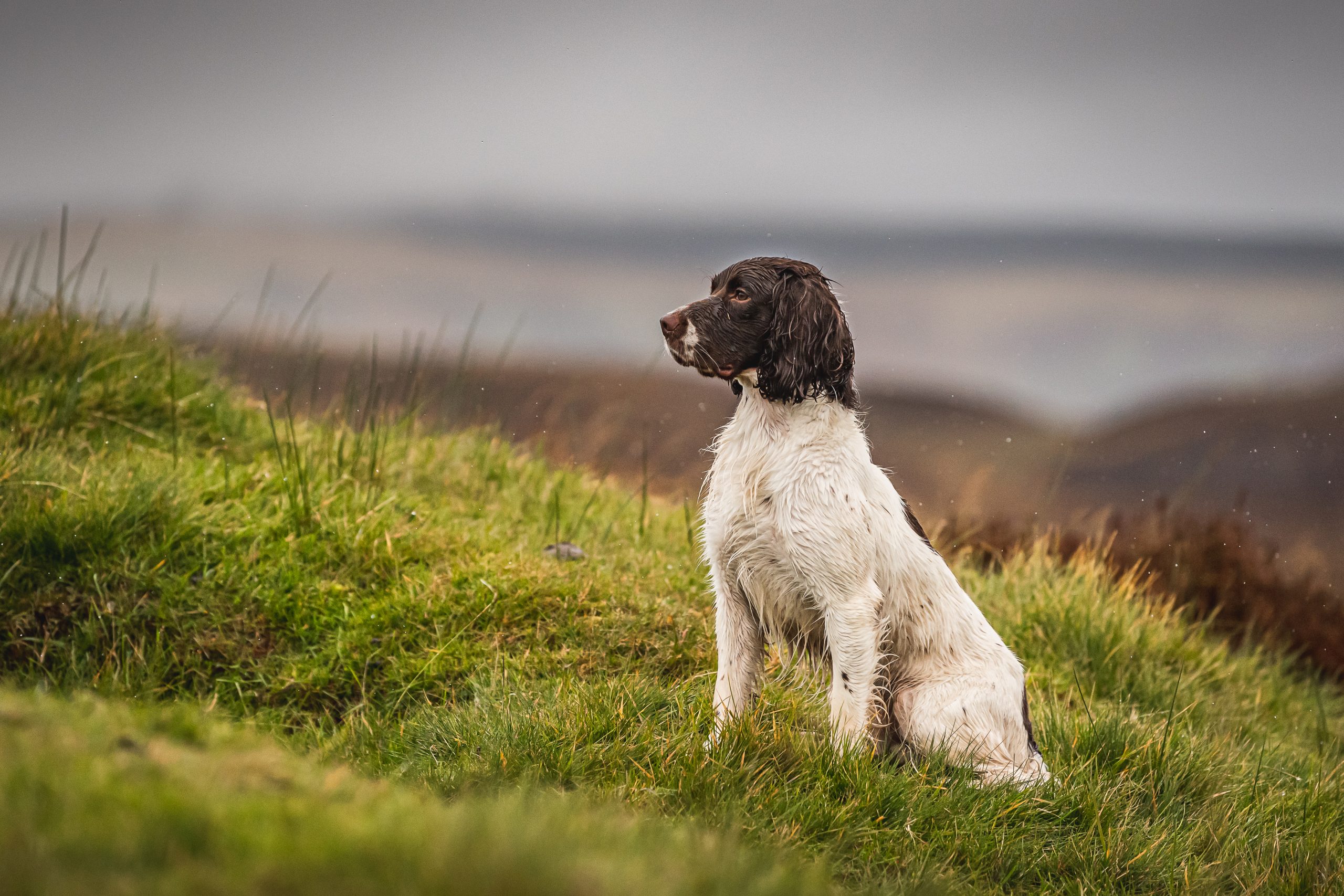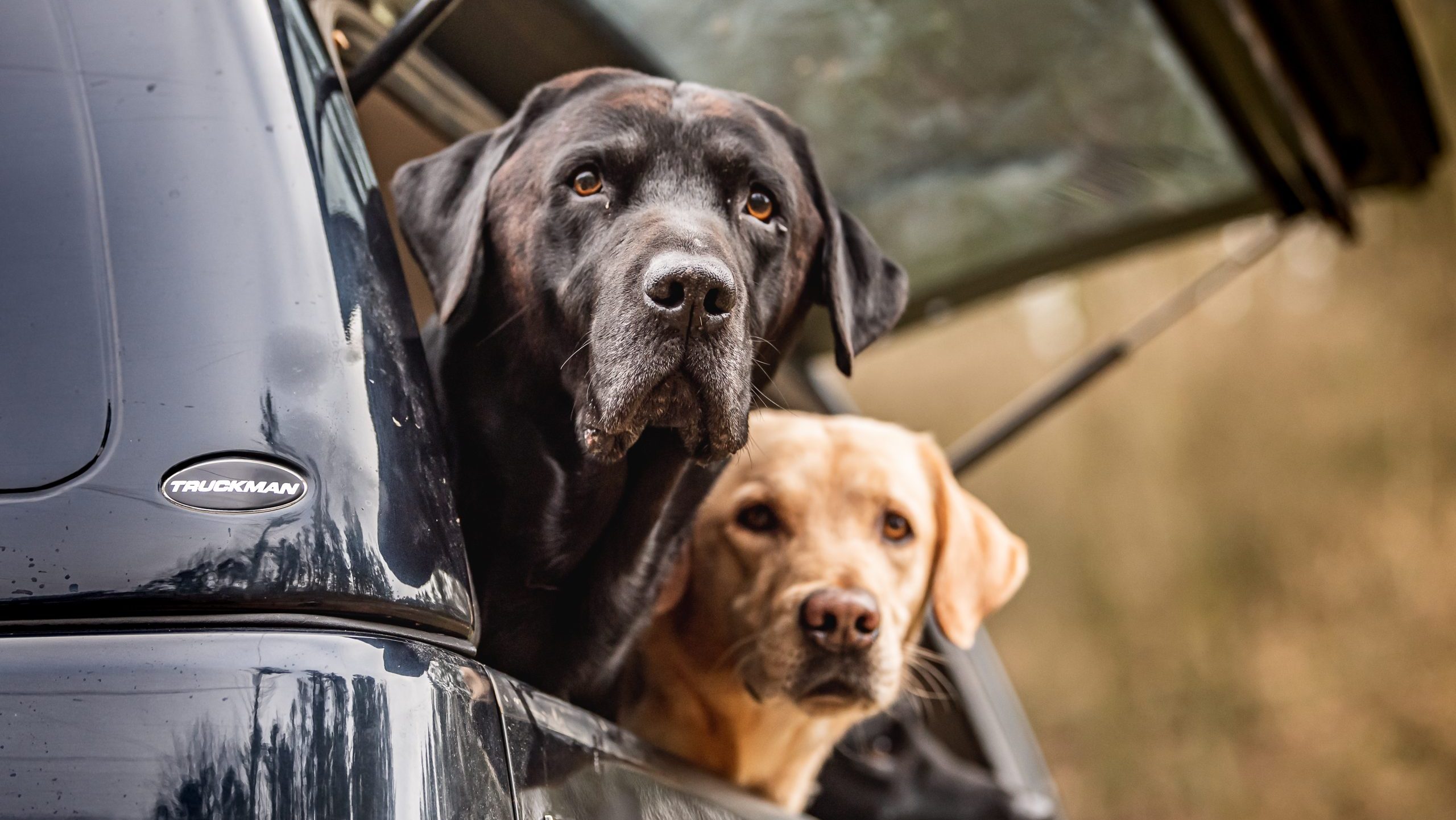Training
Gundog training: 7 tips for a better behaved gundog
It’s rare to make it through the shooting season without encountering at least a few poorly behaved gundogs, but some bad habits crop up more than others. Field Editor Ben Randall considers the most common issues and how to prevent or resolve them via gundog training methods.
Would you like to appear on our site? We offer sponsored articles and advertising to put you in front of our readers. Find out more.
1. How To Stop A Dog From Whining
Whining dogs are common, and can be very frustrating for both the dog’s handler and fellow Guns, pickers-up, beaters and keepers. Dogs that whine on the peg can be distracting and take away from the experience somewhat. The same goes for those that bark and whine when stood behind the Guns picking-up, or when in the dog-box in the car.
Generally, dogs whine when they are desperate to get to something; the problem stems from impatience. In gundog training, the aim is to teach the dog that if it sits patiently and relaxes, it will eventually be rewarded. Here are some tactics to try to stop a dog from whining:
- From a young age, a dog must be taught to stay calm and relaxed around other animals, people, game and food, and generally switch off in the presence of distractions
- As a young dog grows older, a whole array of exercises which simulate the temptations likely to be encountered on a shoot day can be incorporated into your gundog training
- Pups can be taught to wait while other dogs eat at mealtimes
- Make the dog sit and watch as other dogs run past it to retrieve dummies
If your dog does begin to whine or make a noise on a shoot day, don’t ignore the problem in the hope that it will go away – it’s only likely to get worse.
Go back to the very basics and refrain from taking the dog out shooting again until it has shown that it can cope with excitement during your gundog training exercises. Return to a controlled environment and work through patience exercises with food, dummies and game, only progressing when rock-steady (and quiet!) at each stage. The dog must learn to trust you and believe that it will be rewarded if it remains calm and quiet.
2. How To Stop A Gundog Hunting Of Their Own Accord
Gundogs hunting of their own accord is one of the single biggest problems I see in the shooting field. It is a typical symptom of a dog having more belief in itself than in its owner.
The key to preventing this issue lies in developing a trusting relationship so the dog wants to stay near you, as it has learned that it finds more and has more fun when it does.
In gundog puppy training, don’t allow the dog to hunt freely or stray far away from you, and always base hunting around an exercise that is controlled by you. You might encourage the dog to hunt around your feet, for example, where you will drop tennis balls or dummies when the dog is not looking.
The key to resolving this issue is similar to the solution for a dog that runs in, stays quiet, and chases down a dog that hunts on and ignores the whistle:
- Arrive next to the dog to surprise it
- Put the dog on the lead, give the recall command again, and take it back to where you were when you recalled it
- Consistency is key here – you must do this every time the dog ignores you
3. How To Discourage Gundogs From Swapping Retrieves
We’ve all seen the swapping of retrieves happen; a dog drops one bird and picks up another, often several times, before either abandoning the task altogether or returning to the handler with at least something.
This scenario is relatively easy to simulate back at home during your next gundog training session by following these steps:
- At mealtimes, teach your young puppy to eat its food and then come straight to you
- Then, you can introduce a second bowl of food, and allow the dog to eat from one bowl but stop it from going straight to the next
- This will encourage the dog to return to you instead, before being sent to the second bowl as a reward
- This encourages a dog to return to you as quickly as possible and makes it think ‘the sooner I pick the bird and return with it, the sooner I will be sent to find another’
There are a few simple gundog training tricks you can try to reduce the likelihood that your dog will swap birds when sent for a retrieve:
- Firstly, when it picks up a bird, recall the dog rather than relying on it to come to you instinctively
- Secondly, to begin with, only send your dog to retrieve single birds that are not near other birds that may prove tempting
- You could go and collect one of a close pair of birds yourself, then send the dog for the other as a reward for being patient
4. How To Discourage A Gundog From Running In
Running in is where a dog decides to take off and retrieve, hunt or flush game without the handler’s say so. This indicates that the gundog has more belief in itself than in its handler. I often refer to them as spoiled dogs – those which have grown used to getting their own way and doing as they please.
To prevent a gundog from running in, solid foundation of patience training is crucial. By the time a dog goes out shooting, it should know that it must wait before being sent for a retrieve or to hunt.
For your first half a dozen days out in the field, don’t send a young dog to retrieve birds it has seen fall from the sky, but rather place a bird yourself and send the dog for that as a reward for its patience. This reiterates the fact that the reward comes from you and therefore builds the dog’s confidence in you. After a few days of this, you can then progress to sending the dog for birds it did see fall but cannot see in plain sight on the ground – always keep the dog guessing.
The worst thing you can do if your dog runs in is to start calling its name and whistling over and over again. If you do this, the dog will also learn to ignore your commands, and will grow used to returning to you once it has had its fun. Instead, you should:
- Unload your gun, put it back in its slip and chase the dog down silently
- The dog will not expect you to arrive at its heels so out of the blue, and will learn that any repeat of such behaviour will not be tolerated
- Put your dog on a lead and keep it on the lead for the remainder of the day
- Then get to work in the training paddock to teach the dog that you decide when or what he or she retrieves
5. How To Improve Your Gundog’s Focus
A lack of focus can be a frustrating trait, as the dog seems interested in almost everything but you, its owner. A dog that pays little attention to you is not ready for the distractions that will be encountered in the shooting field.
Regular gundog training exercises throughout the spring and summer months can help to remind the dog that if it pays attention, it will be rewarded with retrieves, or food at mealtimes. Too many people overlook the value of regular gundog training outside of the shooting season, expecting their dogs to be switched on and alert to their every command after months of ‘walks’ where they are left to entertain themselves.
To help improve your dog’s focus if they are paying little attention to you on a shoot day but constantly have their eyes on game, other dogs or people, do not let the dog investigate the other distractions. Instead, keep the dog on a lead and at the end of the drive let it watch you place the birds that you will then send it to retrieve. You must re-establish yourself as the centre of attention. Everything that is fun should come from you to win your dog’s dedicated focus.
6. How To Teach Your Dog To Hold An Area
It’s a familiar situation: “it’s over there, in that rough bit of grass between the two oak trees,” you are told. You send your dog back to the spot, stop it, then give the hunt command, and it charges off on another line completely, looking for a different bird. This is where we need a dog that will ‘hold’ (hunt within) a particular area.
Firstly, your dog must be good on the stop whistle. This can be practised at your dog’s mealtimes, on the way to dummies or balls, or just throughout your gundog training sessions. It’s important to always make sure the dog sits promptly upon the command.
You should try as much as you can to use the hunt command after the stop whistle/command as this acts as a reward for the dog’s obedience. When combined with a well-placed dummy or ball, this is a great way of building the dog’s belief that if it listens to you, stops when you tell it to, and hunts in the area around which you have stopped it, it will find something.
Of course, the size of the area you want your gundog to ‘hold’ will vary depending on the environment and the nature of the cover, and whether you are picking-up, rough shooting, or competing in a field trial.
If a dog is leaving the area, we need to remind it why it should stay and hunt around that spot. To do this:
- Take your dog back to where it was when you first blew the stop whistle
- Throw a few balls, dummies, or birds in the area so it sees them fall
- Then, go back to your original position, blow the stop whistle again, and issue the hunt command
- Remember to always be precise with your hunt command, only using it when the dog is very close to where you have marked the bird fall
7. How To Improve Behaviour Around Other Dogs
Not only can poor behaviour around other dogs be embarrassing, but it can be distressing and sometimes even dangerous. On a shoot day, a range of dogs of all breeds and temperaments often come together, so it’s important that they get along and concentrate on the job at hand rather than on one another.
To prevent poor behaviour around other dogs, socialisation with a range of dogs needs to form part of your gundog puppy training. But I can’t stress the importance of socialising your dog with well-behaved dogs enough.
My pups will socialise with my older, trained dogs, but I do not recommend puppy classes where 20 out-of-control pups are simply allowed to run amok, out of control. This, if anything, encourages excitement around other dogs. I recommend introducing a young gundog to other dogs in a calm and controlled environment.
On a shoot day, you can avoid any issues that arise by following a few simple steps. Using a lead when getting your dog out of the car so that it cannot charge up to other dogs is one example. Another is not allowing your dog to run around with others between drives or at elevenses – these are simple measures that are often ignored.
These gundog training techniques should help to improve the behaviour of excitable dogs. For aggressive dogs, I’d recommend visiting a professional dog trainer. Aggression needs immediate attention if it is not to develop into a serious issue.
Training Advice From Gundog Journal
At Gundog Journal, you’ll find a wide range of articles on gundog training, whether you’re looking for advice on gundog puppy training, how much you should expect to pay for a gundog, or how to handle an ageing gundog.
Discover what to expect from the different gundog breeds and check out our health hub for more advice on taking care of your working dog.
Stay up-to-date with the latest gundog training advice and subscribe to Gundog Journal today.
Related articles
Training
Patience is a virtue
It’s a skill that is often overlooked in training, but which is vital for all gundogs. Ben Randall explains how to capitalise on some everyday opportunities to practice it, now that spring is here.
By Time Well Spent
Training
The theory of puppy training
When you collect your puppy – and at every stage thereafter – you’ll need a safe and secure form of transportation. Here are four high-quality options to suit all requirements.
By Time Well Spent
Get the latest news delivered direct to your door
Subscribe to Gundog Journal
Unlock the full potential of your working dog with a subscription to Gundog Journal, the UK’s only dedicated magazine for gundog enthusiasts. Published bi-monthly, this authoritative resource delivers expert training advice, in-depth interviews with top trainers and veterinary guidance to help you nurture a stronger bond with your dog.
Whether you’re a professional handler, breeder, or simply passionate about gundogs, each issue offers a wealth of knowledge on breeds like labradors, spaniels and vizslas. Subscribers gain access to topical articles, real-life stories and exclusive offers from trusted brands.
With stunning photography and thought-provoking content, Gundog Journal is your essential guide to understanding, training and celebrating these remarkable working breeds.


Manage Consent
To provide the best experiences, we use technologies like cookies to store and/or access device information. Consenting to these technologies will allow us to process data such as browsing behavior or unique IDs on this site. Not consenting or withdrawing consent, may adversely affect certain features and functions.
Functional Always active
The technical storage or access is strictly necessary for the legitimate purpose of enabling the use of a specific service explicitly requested by the subscriber or user, or for the sole purpose of carrying out the transmission of a communication over an electronic communications network.
Preferences
The technical storage or access is necessary for the legitimate purpose of storing preferences that are not requested by the subscriber or user.
Statistics
The technical storage or access that is used exclusively for statistical purposes.
The technical storage or access that is used exclusively for anonymous statistical purposes. Without a subpoena, voluntary compliance on the part of your Internet Service Provider, or additional records from a third party, information stored or retrieved for this purpose alone cannot usually be used to identify you.
Marketing
The technical storage or access is required to create user profiles to send advertising, or to track the user on a website or across several websites for similar marketing purposes.


